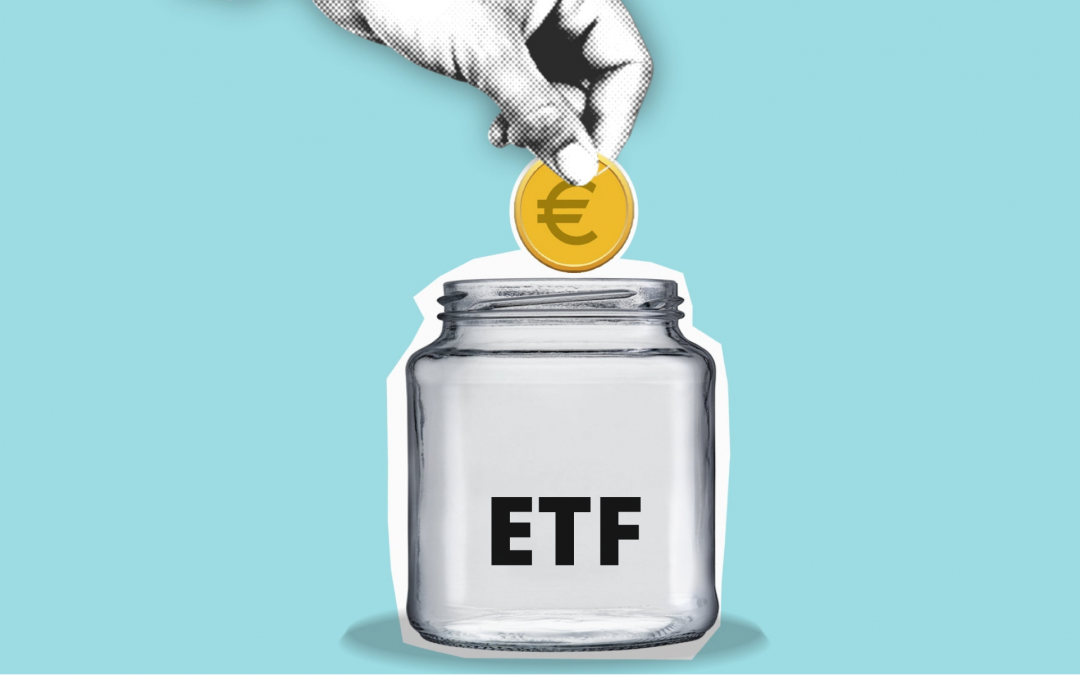ETFs (exchange-traded funds) are a great way to get into investing. But with so many options available, how do you know which ones are right for you? Investing in ETFs can be daunting for newbie investors because there are so many different strategies and products available. However, investing in an ETF isn’t nearly as scary as it seems. After all, investing in ETFs isn’t any more difficult than buying individual stocks. This guide will walk you through everything from the basics of what an ETF is and why they’re the perfect first investment to understanding which investment companies offer the best options for beginners.
What are ETFs?
An exchange-traded fund is an investment that’s bought and sold on a stock exchange. The fund invests in just about anything from stocks to bonds, real estate, commodities, or companies like Apple, Amazon, or PayPal. Most ETFs are designed to replicate the return of an index such as the S&P 500. ETFs that are following an index are called index funds. Those have a management fee that’s usually much lower than the 10-20 percent typical of actively managed funds. In this article, we’ll mostly focus on index fund ETFs. If chosen wisely those ETFs are ideal for beginners looking for a consistent and steady return with less risk than investing in individual securities. With just one investment you’re investing in many different companies at once and thus are spreading your risk. They also provide investors with liquidity because you can buy or sell your shares at any time during the course of the day on the stock market.
Investing strategy tips
Successful investing boils down to defining your investment strategy, and then following it. The key lies in knowing what you want to accomplish with your investments and how long you have until you need the money. For example, if you’re saving for a big purchase, like buying a house or starting a business, then it may make sense to invest in stocks so that you can reach your goal faster. If you’re saving for retirement, then it may be more prudent to put more of your money into bonds or cash savings vehicles like certificates of deposit (CDs). Know your investment goals before jumping into any investment strategy, first ask yourself what kind of investment goals do you want to achieve with your money? This is important because each strategy offers different benefits based on what type of return/long-term value you are looking for. For example, if your goal is simply to build up a nest egg for the future, then an aggressive investment strategy might not be right for this purpose. On the other hand, if your goal is to buy a home soon but don’t want to pay full price because prices are rising quickly, then an aggressive investing strategy could help get the home sooner by purchasing stocks today. After thinking about what type of goals are most important to meet with your investments and why they’re important, think about how much time is left before those goals will be met with what’s available now. For instance, if short-term investing isn’t right
The advantages of ETF investing
Index fund ETF investing is beneficial because the investments are typically less expensive than mutual funds. That’s because those ETFs are passively managed, which means they’re following an index like the S&P 500 and there’s not one person or a team who decides which stocks to buy. Additionally, with ETFs, you can often trade shares of an ETF without paying commissions or broker fees to buy and sell shares. This gives investors a lot more control over when, where, and how much they invest. With an average expense ratio of less than 0.6%, it’s easy to see why people would prefer ETFs for their first investment option. If a company offers a leveraged product (like the ProShares Ultra S&P 500 or the ProShares UltraPro Short S&P 500), then those products will be even better options for low-cost investors who want to use margin accounts to maximize their returns while still maintaining low expenses. They’re easier to understand than mutual funds, too. Mutual funds can be complicated because they contain multiple types of stocks as well as other assets like bonds and derivatives. However, trading in just stocks is simple with an exchange-traded index fund since it only includes one type of stock in its portfolio—that’s it! Plus, there aren’t any hidden fees or charges.
Invest in an entire market with just one ETF
One of the features that makes ETFs attractive is their ability to replicate the entire market. If you wanted to invest in oil and gas, you could buy shares in one of these funds instead of individual companies. Buying shares in a fund like this would let you own shares in many different companies simultaneously. By investing in an ETF, your investment will be diversified across many issuers and markets instead of solely relying on one company or industry. The most popular index to cover the market is the MSCI World. If you want to focus on a certain market like the U.S. there are other indices you can consider for example the S&P 500.
ETF terms explained
In the following paragraphs, we’ll go deeper into some terminology of ETFs that will help you understand which ETF to choose:
Difference between a fund and an ETF
A fund is a pooled investment vehicle that typically invests in many different assets. There are funds to invest in stocks, bonds, real estate and more. An ETF is an investment fund that holds many of the same asset classes as a mutual fund. However, unlike a mutual fund, it trades on an exchange like a stock instead of being bought and sold through brokers. Thus, the name Exchange Traded Fund. Because they’re trading on an exchange, ETFs can be bought and sold at all times to the current market price. Which gives you more liquidity than other types of funds. You can buy and sell shares of ETFs just like you would any other stock or bond.
Physical vs synthetic ETFs
There are two types of ETFs: physical and synthetic. Physical ETFs track an index or portfolio with securities that exist in the real world. They bear the same type and number of securities as the underlying index or portfolio, but they don’t hold those shares in a trust or a separate account. On the other hand, synthetic ETFs are created from computer-generated models that predict how markets will perform. Synthetic ETFs hold no real securities – their value is derived from complex mathematical models which try to mimic how an underlying index or portfolio would behave in a given market scenario.
Distribution policy – Distributing vs accumulating
A distributing ETF pays out all income, which is usually dividends, to your account. An accumulating ETF reinvests that income back into the fund. If you want to not manage your ETF, you might choose an accumulating fund. Whereas if you want a passive income a distributing fund might be the better choice.
To find the perfect ETF for you, checkout different categories on stockcircle.com/etfs.
- ETFs for Beginners - November 16, 2022


